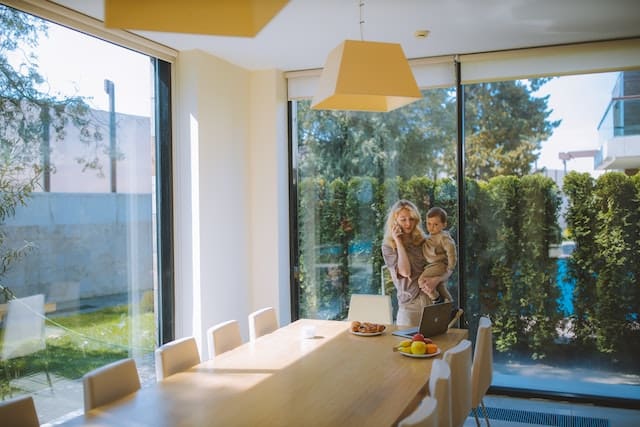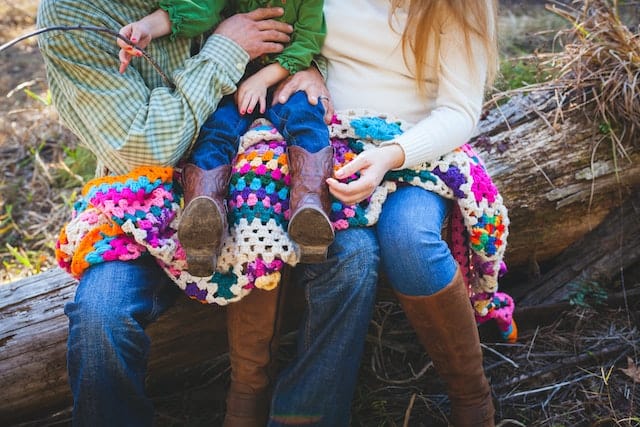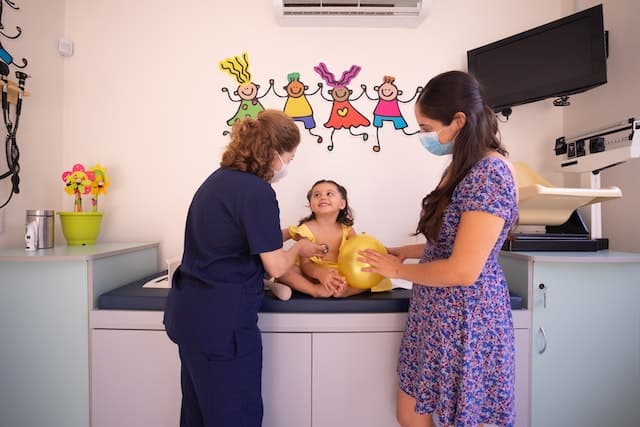Many parents find it challenging to potty train their toddlers. One of the most common issues is when the toddler refuses to tell their parents when they need to go potty.
This can be frustrating for parents who want to help their child learn this important skill.
There are many reasons why a toddler may not communicate their need to go potty. It could be due to a lack of understanding about the process, fear or anxiety about using the potty, or simply a lack of interest.
Whatever the cause, it is important for parents to address this issue to ensure their child’s health and well-being.
Key Takeaways
- Understanding the reasons why a toddler may not communicate their need to go potty is important for addressing this issue.
- Consistency and positive reinforcement are key strategies for successful potty training.
- Parental support and involvement is crucial for helping toddlers learn this important skill.
Understanding Potty Training
Potty training is an important milestone in a toddler’s development. It is a process of teaching a child to use the toilet instead of a diaper. However, not all toddlers are ready at the same age, and it is important to understand the signs of readiness to begin potty training.
According to the American Academy of Pediatrics, most children are ready to begin potty training between 18 and 24 months of age. However, some children may not be ready until they are closer to 3 years old. It is important to wait until the child is physically and emotionally ready to begin potty training.
Physically ready means that the child is able to control their bladder and bowels. They may be able to stay dry for longer periods of time and may show signs of discomfort when their diaper is wet or soiled.
Emotionally ready means that the child is interested in using the toilet and is able to communicate their needs.
It is important to remember that every child is different and may progress at their own pace. Some children may take longer to master potty training, while others may learn quickly. It is important to be patient and provide positive reinforcement during the process.
Some signs of readiness for potty training include:
- Showing an interest in using the toilet or wearing underwear
- Being able to follow simple instructions
- Staying dry for longer periods of time
- Communicating when they need to go to the bathroom
In conclusion, understanding potty training and the signs of readiness can help make the process smoother for both the child and the caregiver. It is important to wait until the child is physically and emotionally ready to begin potty training and to provide positive reinforcement throughout the process.
Recognizing Signs of Readiness
Recognizing signs of readiness in a toddler is crucial in potty training. It is important to note that every child is different, and there is no specific age for potty training. However, most toddlers show signs of readiness between 18 and 24 months.
Body Signals
One of the most important signs of readiness is when a toddler starts to show body signals. This includes squatting, grunting, or making faces when they need to potty. Toddlers may also start to show an interest in the bathroom or want to follow their parents or siblings to the bathroom.
Communication
Communication is another important sign of readiness. A toddler who is ready to potty train will start to communicate their needs. They may use words such as “potty” or “pee-pee” to express when they need to go. They may also start to tell their parents when they have already gone or when they need a diaper change.
Independence
Independence is also a sign of readiness. A toddler who is ready to potty train will start to want to do things on their own. They may want to pull their pants up and down or sit on the potty by themselves. They may also start to show an interest in wearing underwear instead of diapers.
In conclusion, recognizing signs of readiness is crucial in potty training. By paying attention to body signals, communication, and independence, parents can determine when their toddler is ready to start potty training.
It is important to remember that every child is different and may show signs of readiness at different ages.
The Potty Training Process
Potty training is an important milestone for toddlers and parents alike. However, some toddlers may struggle with communicating when they need to go potty, making the process more challenging. Here are some tips to help make the potty training process smoother:
Establish a Routine
Establishing a routine is key to successful potty training. Encourage your toddler to sit on the potty at regular intervals throughout the day, such as after meals or before naptime. This will help them get used to the idea of using the potty regularly and make it easier for them to communicate when they need to go.
Timing is Everything
Timing is important when it comes to potty training. Look for signs that your toddler needs to go, such as squirming or holding themselves. If you notice these signs, encourage them to use the potty. It’s also important to be patient and understanding if accidents happen. Remember, accidents are a normal part of the process.
Choose the Right Equipment
Choosing the right equipment can make a big difference in the potty training process. Consider using a potty chair or a child-sized toilet seat to make it easier for your toddler to use the bathroom. You can also try using fun stickers or rewards to encourage them to use the potty.
In conclusion, the potty training process can be challenging, but with patience, routine, and the right equipment, it can be a success. Remember to be patient and understanding with your toddler, and celebrate their accomplishments along the way.
Dealing with Accidents
Accidents are bound to happen when potty training a toddler. It’s important to stay calm and handle the situation in a matter-of-fact manner. Here are some tips for dealing with accidents:
-
Stay Positive: Accidents are a normal part of potty training and should be expected. It’s important to stay positive and encourage your toddler to keep trying.
-
Clean Up Quickly: When an accident happens, it’s important to clean it up quickly to prevent any lingering smells or stains. Use a disinfectant cleaner to sanitize the area.
-
Involve Your Toddler: Encourage your toddler to help with the clean-up process. This can help them understand the consequences of not using the potty.
-
Use Rewards: If your toddler is struggling with accidents, consider using a reward system to encourage them to use the potty. Stickers, treats, or small toys can be effective motivators.
-
Consider Diapers or Pull-Ups: If accidents are happening frequently, it may be helpful to use diapers or pull-ups during the day. This can help prevent messes and give your toddler a sense of security.
-
Be Patient: Potty training takes time and patience. Remember that accidents are a normal part of the process and your toddler will eventually get the hang of it.
By following these tips, you can help make the potty training process less stressful for both you and your toddler.
Addressing Potty Training Challenges
Potty training can be a challenging time for both parents and toddlers. One common challenge is when a toddler refuses to tell their caregiver when they need to go potty. This can lead to accidents and frustration for everyone involved.
However, there are several reasons why a toddler may not be communicating their need to use the bathroom.
UTI or Medical Condition
It’s important to rule out any medical conditions that may be causing discomfort or pain when using the bathroom. A urinary tract infection (UTI) can cause pain and discomfort, making a toddler hesitant to use the bathroom.
If a UTI is suspected, it’s important to consult with a healthcare provider for proper diagnosis and treatment.
Constipation
Constipation can also cause discomfort and pain when using the bathroom. If a toddler is constipated, they may avoid going altogether, leading to accidents. Encouraging a healthy diet with plenty of fiber and fluids can help prevent constipation.
Fear
Fear of the toilet or bathroom can also be a reason why a toddler is hesitant to communicate their need to go potty. This fear can be caused by a traumatic experience or simply being overwhelmed by the process.
Creating a positive and supportive environment and offering rewards for successful potty trips can help alleviate this fear.
Habit
Sometimes, a toddler may have developed a habit of not communicating their need to go potty. This can be addressed by establishing a routine and consistently reminding them to use the bathroom at regular intervals.
Frustration and Stress
If a toddler is feeling frustrated or stressed, they may be less likely to communicate their need to go potty. It’s important to create a calm and supportive environment and avoid placing too much pressure on the child.
Regression
Regression is common during potty training and can be caused by a change in routine or stressful events. If a toddler is regressing in their potty training, it’s important to be patient and offer support and encouragement.
Overall, addressing potty training challenges requires patience, understanding, and a supportive environment. By identifying the underlying cause of a toddler’s reluctance to communicate their need to go potty, parents and caregivers can take steps to address the issue and make potty training a positive experience for everyone involved.
Positive Reinforcement Strategies
Positive reinforcement is an effective way to encourage toddlers to communicate their needs to use the potty. By rewarding a child’s positive behavior, they are more likely to repeat it in the future.
Here are some positive reinforcement strategies that parents can use to encourage their toddlers to use the potty:
Praise
Praise is a simple and effective way to reinforce positive behavior. When a toddler successfully uses the potty, parents should praise them with positive words, such as “good job” or “well done.” This positive reinforcement will encourage the toddler to repeat the behavior in the future.
Stickers
Stickers are a fun and tangible way to reward a toddler’s positive behavior. Parents can create a sticker chart and give their child a sticker every time they successfully use the potty. Once the chart is filled, parents can celebrate their child’s achievement with a special treat or activity.
Celebrate
Celebrating a toddler’s successful potty use is another way to reinforce positive behavior. Parents can celebrate with their child by doing a special dance, singing a song, or giving them a high-five. This positive reinforcement will encourage the toddler to continue using the potty in the future.
Overall, positive reinforcement is an effective way to encourage toddlers to communicate their needs to use the potty. By using praise, stickers, and celebration, parents can reinforce positive behavior and encourage their child to continue using the potty in the future.
Parental Support and Involvement
Parents play a crucial role in supporting their toddlers during the potty training process. It is important for parents to be involved and provide support throughout the journey.
Here are a few ways parents can support their toddlers during potty training:
-
Provide attention: Parents should be attentive to their child’s needs and cues. This means paying attention to signs that the child needs to use the potty, such as squirming or holding themselves. By being attentive, parents can help their child use the potty in a timely manner.
-
Offer reminders: Parents can offer gentle reminders to their child about using the potty. This can be done by setting a timer or reminding the child at regular intervals. Reminders can help the child stay on track and avoid accidents.
-
Use positive reinforcement: Parents should use positive reinforcement to encourage their child’s progress. This can include offering praise or rewards for successful potty trips. Positive reinforcement can help motivate the child and make the process more enjoyable.
-
Be patient: Potty training can be a challenging process for both the child and the parent. It is important for parents to be patient and understanding during this time. Parents should avoid getting frustrated or angry with their child, as this can create a negative association with the potty.
By providing support and involvement, parents can help their toddlers successfully navigate the potty training process. With patience, attention, and positive reinforcement, parents can help their child develop healthy bathroom habits that will last a lifetime.
When to Seek Medical Advice
If a toddler is not showing any signs of potty training readiness or is experiencing difficulty in controlling their bladder or bowel movements, it may be time to seek medical advice. A pediatrician or doctor can help determine if there is an underlying medical condition that is causing the delay or difficulty in potty training.
Some signs that may indicate the need for medical advice include:
- Lack of progress in potty training despite consistent efforts
- Frequent accidents or inability to control bladder or bowel movements
- Pain or discomfort during urination or bowel movements
- Blood in urine or stool
- Excessive thirst or urination
- Chronic constipation or diarrhea
A doctor or pediatrician may perform a physical exam and recommend further testing or evaluation to determine if there is an underlying medical issue. They may also provide guidance on strategies to help with potty training and offer support and resources for parents.
It’s important to remember that every child is different, and some may take longer to potty train than others. However, seeking medical advice can help ensure that any underlying medical conditions are identified and addressed, and can provide support for parents during the potty training process.
Specific Considerations for Boys and Girls
When it comes to potty training, boys and girls have some unique differences that parents should be aware of. Here are some specific considerations to keep in mind:
Boys
Boys may take longer to potty train than girls, and they may have a harder time with bowel movements. It’s important to encourage boys to sit on the toilet to pee, rather than standing, as this can help them learn to fully empty their bladder. Parents can also try using targets in the toilet bowl to make the process more fun.
It’s also important to pay attention to the type of underwear boys are wearing. Tight-fitting underwear can make it harder for boys to feel when they need to go, so looser underwear may be a better option. Parents can also consider using training pants with extra padding to help prevent accidents.
Girls
Girls may be more likely to have accidents during potty training, as they have a shorter urethra than boys. Parents can help prevent accidents by encouraging girls to sit on the toilet with their legs spread apart, which can help them fully empty their bladder.
Parents should also pay attention to the type of snacks their daughter is eating. Foods that are high in sugar or caffeine can irritate the bladder and make it harder for girls to hold their urine. Instead, parents should offer plenty of water and healthy snacks like fruits and vegetables.
Overall, potty training can be a challenging process, but with patience and persistence, parents can help their child succeed. By paying attention to these specific considerations for boys and girls, parents can help make the process a little easier.
Related: When to Switch to Pull Ups
Frequently Asked Questions
Related Post: How To Teach A Child To Wipe Properly After Bowel Movement?

Iesha is a loving mother of 2 beautiful children. She’s an active parent who enjoys indoor and outdoor adventures with her family. Her mission is to share practical and realistic parenting advice to help the parenting community becoming stronger.



